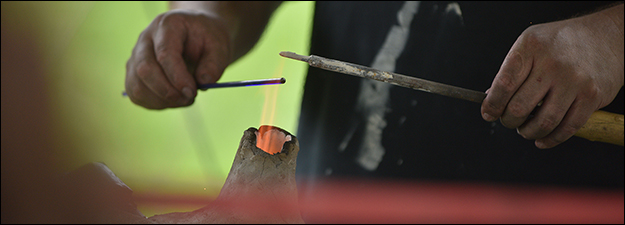Visualizing Medieval Connections: Network Analysis and Digital Mapping I
Sponsoring Organization(s)
Alabama Medieval Studies (ALMS)
Organizer Name
Kate M. Craig, Leanne Good
Organizer Affiliation
Auburn Univ., Univ. of South Alabama
Presider Name
Kate M. Craig
Paper Title 1
Power and Proximity: Mapping Late Tenth-Century Networks through Gerbert of Aurillac's Letters
Presenter 1 Name
Courtney DeMayo
Presenter 1 Affiliation
Heidelberg Univ.
Paper Title 2
Ubi est thesaurus tuus, ibi est et cor tuum: Spatial and Network Analysis of the Monastic Cartulary
Presenter 2 Name
Leland Renato Grigoli
Presenter 2 Affiliation
Brown Univ.
Paper Title 3
Mapping Saint Catherine's: Place, Space, and Identity in Medieval Avignon
Presenter 3 Name
Christine Axen
Presenter 3 Affiliation
Boston Univ.
Start Date
14-5-2016 1:30 PM
Session Location
Schneider 1125
Description
This session highlights emerging perspectives on what it meant to be connected in the Middle Ages, and how those connections shaped spatial and social identities. What moved in the medieval world (ideas, objects, people, stories, technology)? How did different rhythms of motion and patterns of circulation intersect with one another? How can medieval connections be visualized and represented, and what new impressions of the medieval world might we form by focusing on movement and interaction rather than stasis? The papers engage the methodological question of how to bring new digital approaches, such as social network analysis and digital mapping, to bear on this research.
Leanne Good
Visualizing Medieval Connections: Network Analysis and Digital Mapping I
Schneider 1125
This session highlights emerging perspectives on what it meant to be connected in the Middle Ages, and how those connections shaped spatial and social identities. What moved in the medieval world (ideas, objects, people, stories, technology)? How did different rhythms of motion and patterns of circulation intersect with one another? How can medieval connections be visualized and represented, and what new impressions of the medieval world might we form by focusing on movement and interaction rather than stasis? The papers engage the methodological question of how to bring new digital approaches, such as social network analysis and digital mapping, to bear on this research.
Leanne Good

